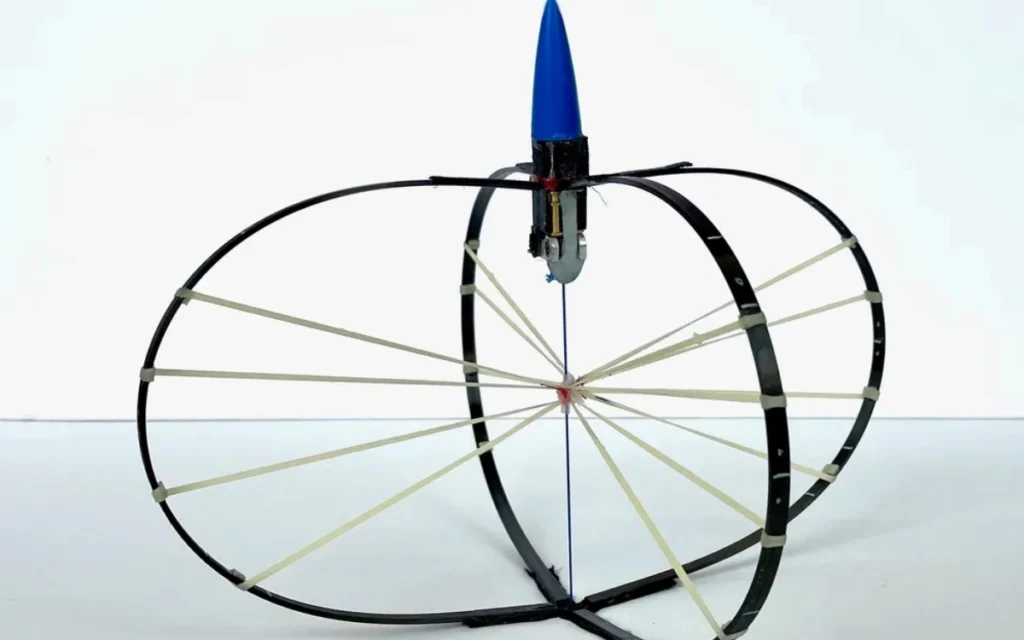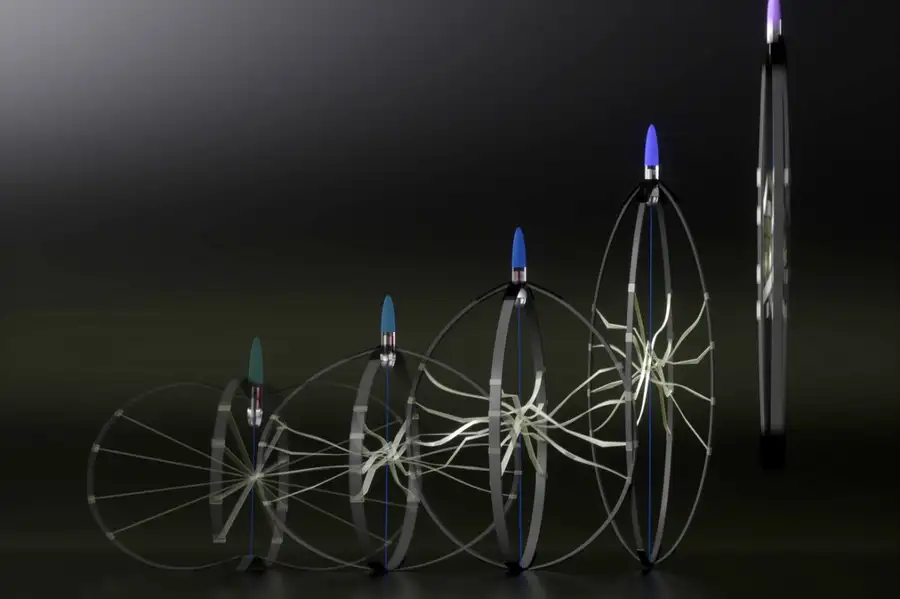World’s highest jumping robot can jump higher than a 10-story building
- The world’s highest jumping robot can leap more than 100 feet in the air – the hight of a 10-story building
- The one-foot device can accelerate from 0-60 mph (0-97 km/h) in nine meters per second (30 feet per second)
- It was created as part of a study by researchers at the University of California, Santa Barbara
Published on Feb 01, 2024 at 6:56 PM (UTC+4)
by Adam Gray
Last updated on Feb 02, 2024 at 1:33 PM (UTC+4)
Edited by
Amelia Jean Hershman-Jones
The contraption you’re looking at is the world’s highest jumping robot.
Designed by researchers from the University of California, Santa Barbara, the one-foot-tall device can leap more than 100 feet in the air.
To put that into perspective, that’s the same height as a 10-story building, – and it’s three times the current record for a jumping robot.

READ MORE! Elon Musk says Neuralink has implanted its first brain chip in a human
Apparently the technology could be used to navigate obstacles on Earth and in space.
“The motivation came from a scientific question,” lead author Elliot W. Hawkes, a mechanical engineer at UC Santa Barbara, said in a statement.
“We wanted to understand what the limits were on engineered jumpers.”

The vast majority of jumping systems are based on biological jumpers – or those in the animal kingdom.
That being said, animals have limits to their jumping ability based on how much energy they can produce in a stroke of their muscle.
What’s more, animals have relatively small springs, just enough to store the energy produced by this stroke.
According to Hawkes, the best animal jumper is like the galago – a squirrel-sized primate – which has been recorded jumping around 2.3 meters (10.5 feet) high from a standstill.

Researchers took a different approach with the world’s highest jumping robot, using a motor to take multiple strokes and increase the amount of energy stored in the spring.
The small motor is used to wind up a line that constricts the spring, which is made of carbon-fiber compression bows and rubber bands.
In order for the device to launch into the air, a release mechanism is unlatched.
The device is both lightweight and aerodynamic, which is why it’s able to jump the height of a 10-story building and accelerate from 0-60 mph (0-97 km/h) in nine meters per second (30 feet per second).
Not only could this kind of device be used to navigate difficult terrains on Earth, researchers claim it could reach even greater heights on the Moon, where gravity is weaker.
That’s something we found out when we saw rare footage showing how hard astronauts find it walking on the Moon.
Little wonder it’s such a rigorous process trying to become an astronaut.
DISCOVER SBX CARS: The global premium car auction platform powered by Supercar Blondie

Adam Gray is an experienced freelance motoring journalist and content creator based in the United Kingdom. Using his media accreditation with manufacturers’ press offices, Adam test drives the latest cars and attends new vehicle press launches, producing written reviews and news pieces for a variety of lifestyle and business publications. Here at Supercar Blondie, Adam applies his journalistic skills penning social-first content around current news and trends. When he’s not behind the wheel of the latest car or writing up another viral story, Adam can be found at his local rink playing ice hockey or at the Riverside Stadium supporting his beloved Middlesbrough FC.




